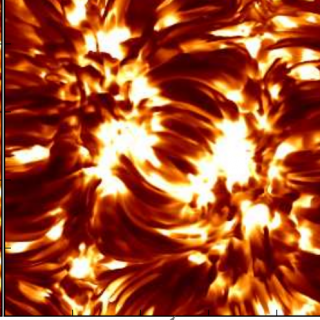Bibcode
Manso Sainz, R.; Roncero, Octavio; Sanz-Sanz, Cristina; Aguado, Alfredo; Asensio Ramos, A.; Trujillo Bueno, J.
Bibliographical reference
The Astrophysical Journal, Volume 788, Issue 2, article id. 118, 14 pp. (2014).
Advertised on:
6
2014
Journal
Citations
17
Refereed citations
12
Description
Depolarizing collisions are elastic or quasielastic collisions that
equalize the populations and destroy the coherence between the magnetic
sublevels of atomic levels. In astrophysical plasmas, the main
depolarizing collider is neutral hydrogen. We consider depolarizing
rates on the lowest levels of neutral and singly ionized alkali earths
Mg I, Sr I, Ba I, Mg II, Ca II, and Ba II, due to collisions with
H°. We compute ab initio potential curves of the atom-H° system
and solve the quantum mechanical dynamics. From the scattering
amplitudes, we calculate the depolarizing rates for Maxwellian
distributions of colliders at temperatures T <= 10,000 K. A
comparative analysis of our results and previous calculations in the
literature is completed. We discuss the effect of these rates on the
formation of scattering polarization patterns of resonant lines of
alkali earths in the solar atmosphere, and their effect on Hanle effect
diagnostics of solar magnetic fields.
Related projects

Magnetism, Polarization and Radiative Transfer in Astrophysics
Magnetic fields pervade all astrophysical plasmas and govern most of the variability in the Universe at intermediate time scales. They are present in stars across the whole Hertzsprung-Russell diagram, in galaxies, and even perhaps in the intergalactic medium. Polarized light provides the most reliable source of information at our disposal for the
Ernest
Alsina Ballester